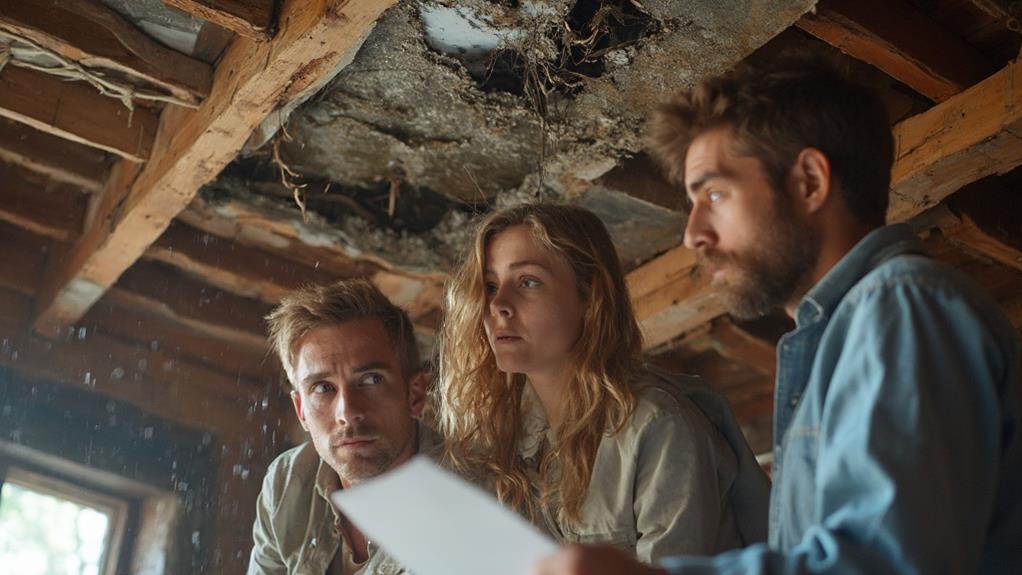Delaying roof repairs after a storm can lead to significant hidden costs and long-term damage. Water infiltration can cause structural decay, mold growth, and compromised insulation effectiveness. These issues result in increased energy costs and potential health hazards. Pest infestations may occur through damaged areas, further exacerbating problems. Electrical systems can be at risk, creating fire and shock hazards. Property value may decrease due to visible damage and underlying issues. Ultimately, what starts as a minor repair can escalate into a costly roof replacement. Understanding these hidden costs highlights the importance of prompt action and professional assessment following storm damage.
Water Damage and Structural Decay
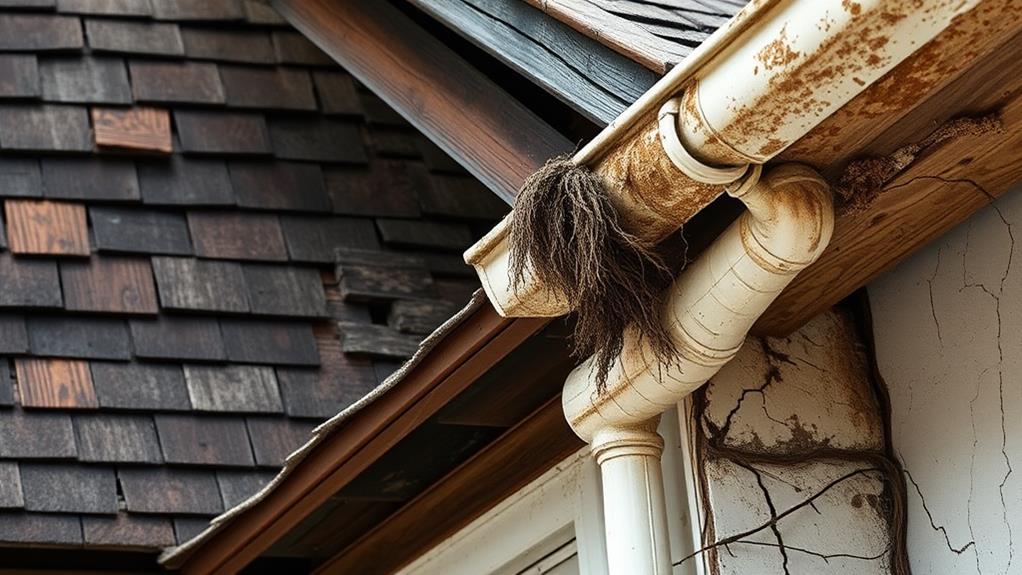
With delayed roof repairs following a storm, water damage and structural decay become significant concerns. When roofing issues are left unaddressed, even minor damage can escalate into major problems. Water infiltration through compromised shingles, flashing, or other roofing components can lead to extensive interior damage, affecting ceilings, walls, and insulation. This moisture intrusion creates an ideal environment for mold growth, which not only poses health risks but also accelerates the deterioration of building materials.
The structural integrity of the home is at risk as water seeps into wooden support beams, trusses, and rafters. Over time, this persistent moisture exposure can cause wood rot, weakening the roof's foundation and potentially leading to sagging or even collapse in severe cases. Additionally, water damage can compromise electrical systems, creating fire hazards and necessitating costly repairs. The longer repairs are postponed, the more widespread and expensive the damage becomes.
Homeowners may face hefty bills for not only roof replacement but also for addressing secondary issues like pest infestations, compromised air quality, and decreased energy efficiency due to damaged insulation. Prompt attention to storm-related roof damage is crucial for maintaining the home's safety, value, and longevity.
Mold and Mildew Growth
The hidden menace of mold and mildew growth poses a significant threat when roof repairs are delayed after a storm. Moisture intrusion from a damaged roof creates an ideal environment for these fungi to thrive. As mold and mildew spread, they not only compromise the structural integrity of building materials but also present serious health risks to occupants.
Mold spores can rapidly colonize damp areas, including insulation, drywall, and wood framing. This proliferation can occur within 24 to 48 hours of water exposure. The presence of mold leads to the deterioration of affected materials, weakening the building's structure and potentially causing costly damage beyond the initial roof repair.
Health-wise, mold exposure can trigger allergic reactions, respiratory issues, and other ailments, particularly in individuals with pre-existing conditions or weakened immune systems. Common symptoms include coughing, wheezing, and eye irritation. In severe cases, prolonged exposure may lead to more serious health complications.
Addressing mold growth often requires professional remediation services, significantly increasing the overall cost of repairs. Prompt roof repair after storm damage is crucial to prevent these hidden, long-term consequences and maintain a safe, healthy living environment.
Increased Energy Costs
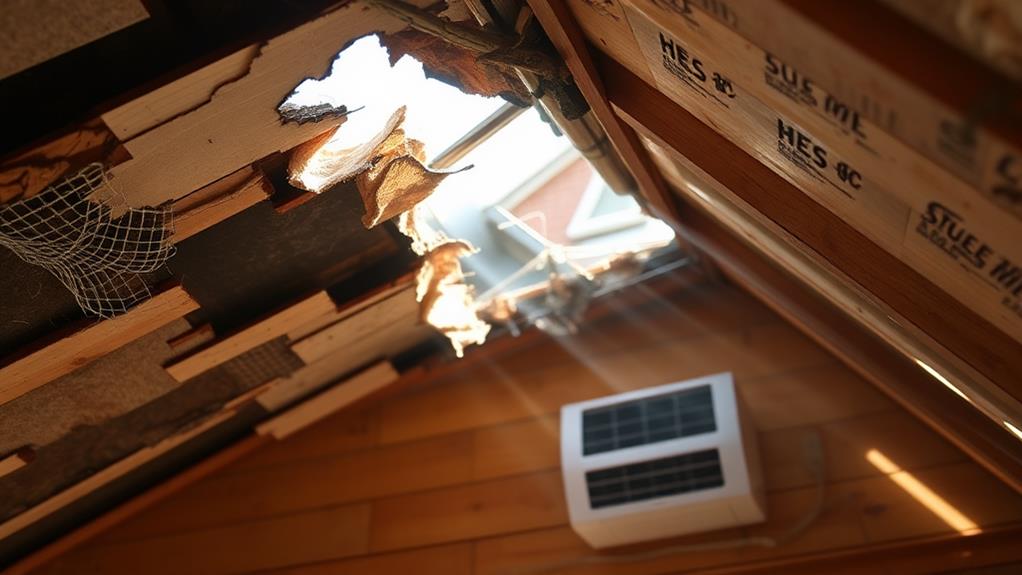
Homeowners often overlook the impact of delayed roof repairs on their energy bills. A damaged roof can significantly compromise a home's insulation and ventilation systems, leading to increased energy consumption and higher utility costs.
When roofing materials are compromised, heat can easily escape during winter months, forcing heating systems to work harder to maintain comfortable indoor temperatures. Conversely, in summer, damaged roofs allow hot air to penetrate the home, causing air conditioning units to run more frequently and for longer periods.
Gaps, cracks, or missing shingles can create air leaks, disrupting the home's thermal envelope. This inefficiency forces HVAC systems to compensate, resulting in higher energy usage and increased wear on equipment. Additionally, water damage from leaks can degrade insulation, further reducing its effectiveness. As insulation loses its R-value, more energy is required to regulate indoor temperatures.
Prompt roof repairs after storm damage are crucial for maintaining energy efficiency. By addressing issues quickly, homeowners can prevent long-term energy waste and avoid the compounding costs associated with prolonged damage. Investing in timely repairs not only preserves the structural integrity of the home but also helps maintain lower energy bills and a more comfortable living environment.
Compromised Insulation Effectiveness
As storm damage to a roof persists without repair, the effectiveness of a home's insulation becomes severely compromised. Roof damage often leads to water infiltration, which can saturate insulation materials, reducing their thermal resistance and overall performance. Wet insulation loses its ability to trap air, which is essential for maintaining temperature differentials between the interior and exterior of the home.
The compromised insulation not only fails to regulate indoor temperatures efficiently but also creates an environment conducive to mold growth. This can further degrade the insulation's effectiveness and pose health risks to occupants. Additionally, moisture-laden insulation can sag or compress, creating gaps and inconsistencies in the thermal barrier.
Over time, the reduced insulation effectiveness can lead to significant heat loss in winter and heat gain in summer, forcing HVAC systems to work harder and consume more energy. This cycle of inefficiency can persist long after the visible signs of roof damage have been addressed, making it crucial to repair storm damage promptly. Delayed repairs may necessitate the complete replacement of insulation, adding substantially to the overall cost of restoration and highlighting the importance of timely roof maintenance.
Pest Infestations
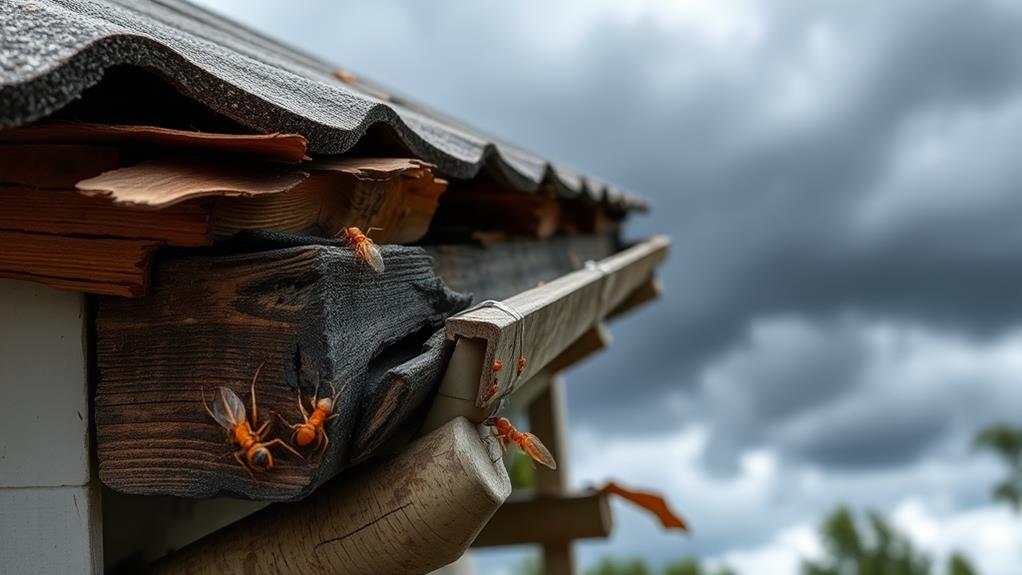
Numerous pests can exploit storm-damaged roofs, turning minor openings into gateways for infestations. Rodents, birds, and insects are quick to take advantage of even the smallest gaps in roofing materials. Mice and rats can squeeze through openings as small as a quarter-inch, while bats and birds may nest in larger cavities. Insects like termites, carpenter ants, and wasps can infiltrate through tiny cracks, potentially causing extensive structural damage over time.
Once pests establish themselves in your attic or roof space, they can create a cascade of problems. Rodents may chew through electrical wiring, increasing fire hazards. Their droppings and urine can contaminate insulation and pose health risks to occupants. Birds' nests can clog gutters and downspouts, leading to water damage. Insect infestations can compromise the integrity of wooden structures, potentially necessitating costly repairs or even partial roof replacement.
Prompt action in repairing storm damage is crucial to prevent these infestations. Regular roof inspections and maintenance can help identify and address potential entry points before they become serious problems, saving homeowners from the expenses and headaches associated with pest removal and subsequent damage repair.
Insurance Claim Complications
Delayed roof repairs can frequently lead to insurance claim complications, exacerbating the financial burden on homeowners. When storm damage is not promptly addressed, insurance companies may attribute subsequent issues to negligence rather than the original event. This can result in claim denials or reduced payouts, leaving homeowners responsible for a larger portion of repair costs.
Additionally, waiting to file a claim can make it challenging to prove the direct link between the storm and the damage. Many policies have strict time limits for reporting claims, and exceeding these deadlines may result in automatic denial. Insurers may also argue that the damage worsened due to the delay, potentially reducing the amount they're willing to cover.
Furthermore, multiple claims filed over time for the same issue can raise red flags with insurance providers. This may lead to increased premiums or even policy cancellation. To avoid these complications, homeowners should document damage immediately after a storm, file claims promptly, and proceed with repairs as soon as possible. Engaging a professional roofing contractor to assess and document the damage can also strengthen the claim and ensure a smoother insurance process.
Decreased Property Value
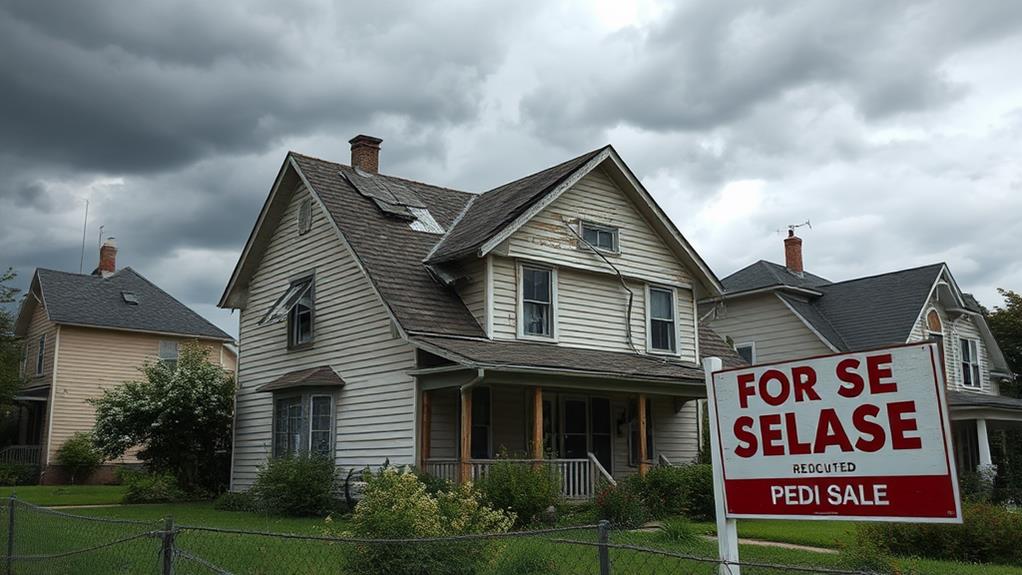
One of the most significant consequences of delayed roof repairs after a storm is the potential for decreased property value. A damaged roof can significantly impact a home's overall worth, as it is a crucial component of the structure's integrity and appearance. Prospective buyers are likely to be deterred by visible roof damage or signs of neglect, which can lead to lower offers or difficulty selling the property altogether.
Furthermore, unaddressed roof issues can cascade into more severe problems, affecting other parts of the house. Water damage from leaks can compromise the building's structural integrity, lead to mold growth, and damage interior finishes. These compounding issues can further diminish the property's value and appeal.
Real estate appraisers and home inspectors are trained to identify signs of roof damage and may factor these observations into their assessments. This can result in lower appraisals and failed home inspections, potentially derailing sales or refinancing efforts. Additionally, neighboring properties with well-maintained roofs may appreciate in value more quickly, leaving homes with delayed repairs at a comparative disadvantage in the local real estate market.
Electrical System Risks
Lurking beneath the surface of a storm-damaged roof lies a potentially dangerous threat to a home's electrical system. Water infiltration from roof damage can create hazardous conditions for electrical wiring, fixtures, and components. As moisture seeps through compromised roofing materials, it can accumulate in attic spaces, walls, and ceilings, coming into contact with electrical elements.
This moisture exposure can lead to short circuits, electrical fires, and shock hazards. Corroded wiring insulation, damaged junction boxes, and compromised circuit breakers are common consequences of prolonged water exposure. Additionally, water can cause metal components to rust, further deteriorating the integrity of the electrical system.
Delayed roof repairs exacerbate these risks by allowing continued water intrusion. Over time, this can result in the need for extensive electrical system overhauls, significantly increasing repair costs. Furthermore, compromised electrical systems pose serious safety risks to occupants, potentially leading to injuries or fatalities.
To mitigate these dangers, it's crucial to address roof damage promptly and thoroughly inspect the electrical system for any signs of water damage. Professional assessment and repairs are essential to ensure the safety and functionality of the home's electrical infrastructure following storm-related roof damage.
Roof Replacement vs. Repair
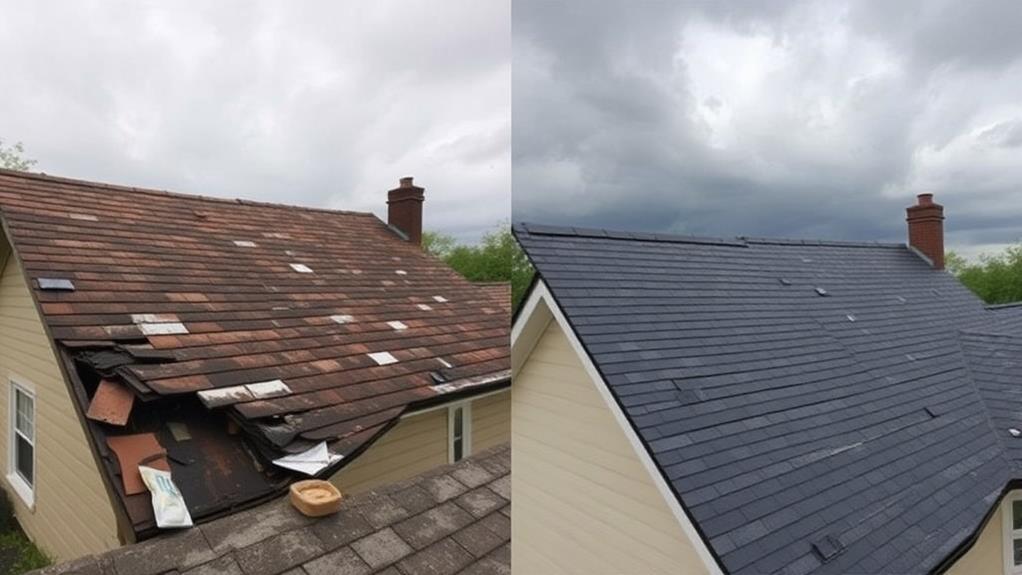
When faced with storm-related roof damage, homeowners must carefully consider whether to repair the existing roof or opt for a complete replacement. This decision depends on several factors, including the extent of the damage, the age of the roof, and long-term cost-effectiveness.
Repairs are typically suitable for minor damage, such as a few missing shingles or small leaks. They are generally less expensive and can extend the life of a relatively new roof. However, repairs may not address underlying issues and could lead to recurring problems if the damage is more extensive than initially apparent.
Roof replacement, while more costly upfront, offers several advantages. It provides a comprehensive solution, addressing both visible and hidden damage. A new roof also improves energy efficiency, enhances curb appeal, and often comes with extended warranties. For older roofs or those with significant damage, replacement can be more cost-effective in the long run, eliminating the need for frequent repairs.
Ultimately, the choice between repair and replacement should be based on a professional assessment of the roof's condition, the home's overall value, and the homeowner's long-term plans for the property.
Health and Safety Hazards
Delaying roof repairs after a storm can lead to several significant health and safety hazards for homeowners and their families. One of the primary concerns is water infiltration, which can cause mold growth throughout the house. Mold spores can trigger allergic reactions, respiratory issues, and other health problems, particularly in individuals with pre-existing conditions or weakened immune systems.
Structural damage is another critical hazard. Compromised roof integrity can lead to weakened support beams, ceiling collapses, and even wall instability. This puts occupants at risk of injury from falling debris or sudden structural failures. Additionally, water damage can compromise electrical systems, increasing the risk of fires or electrocution.
Pests such as rodents and insects may also enter through damaged areas, potentially spreading diseases and causing further property damage. In colder climates, ice dams can form on damaged roofs, creating dangerous falling ice hazards and exacerbating existing leaks. Lastly, a damaged roof can negatively impact the home's insulation, leading to energy inefficiency and potentially dangerous temperature fluctuations, especially for vulnerable individuals during extreme weather conditions.
Frequently Asked Questions
How Long Can I Safely Wait Before Addressing Storm Damage to My Roof?
Addressing storm damage to your roof promptly is crucial. While minor issues may allow a brief delay, significant damage should be addressed immediately. Generally, it's advisable to inspect and repair within 1-2 weeks to prevent further complications.
Are There Any DIY Temporary Fixes for Minor Roof Damage After Storms?
While DIY temporary fixes for minor roof damage exist, such as applying roofing tar or installing a tarp, it's crucial to exercise caution. These solutions are short-term and may not prevent further damage. Professional assessment is always recommended for safety.
How Often Should I Have My Roof Professionally Inspected for Storm Damage?
Regular, robust roof reviews are recommended. Professional inspections should be performed annually, or promptly post-powerful storms. Biannual checks are advisable in areas prone to severe weather. This proactive approach helps prevent potential problems and preserves your property's protection.
What Documentation Should I Gather Before Contacting My Insurance Company About Roof Damage?
Before contacting your insurance company about roof damage, gather detailed photographs, a professional inspection report, repair estimates, maintenance records, and any relevant weather reports. Document the date of the damage and keep receipts for temporary repairs or mitigation efforts.
Can Storm Damage to My Roof Affect My Home's Warranty or Future Insurance Rates?
Storm damage can potentially impact your home warranty coverage and future insurance rates. Unaddressed damage may void certain warranty protections. Additionally, filing claims for roof damage could lead to increased premiums or affect your insurability in the future.
Conclusion
Like a neglected wound festering beneath the surface, delayed roof repairs can lead to far-reaching consequences. The castle's crumbling battlements invite invaders of moisture, decay, and pests, while draining the kingdom's coffers through increased energy costs. As the fortress weakens, its value diminishes, and the safety of its inhabitants is jeopardized. Swift action to mend the breach is not merely a matter of maintenance, but a crucial defense against the siege of time and elements.
